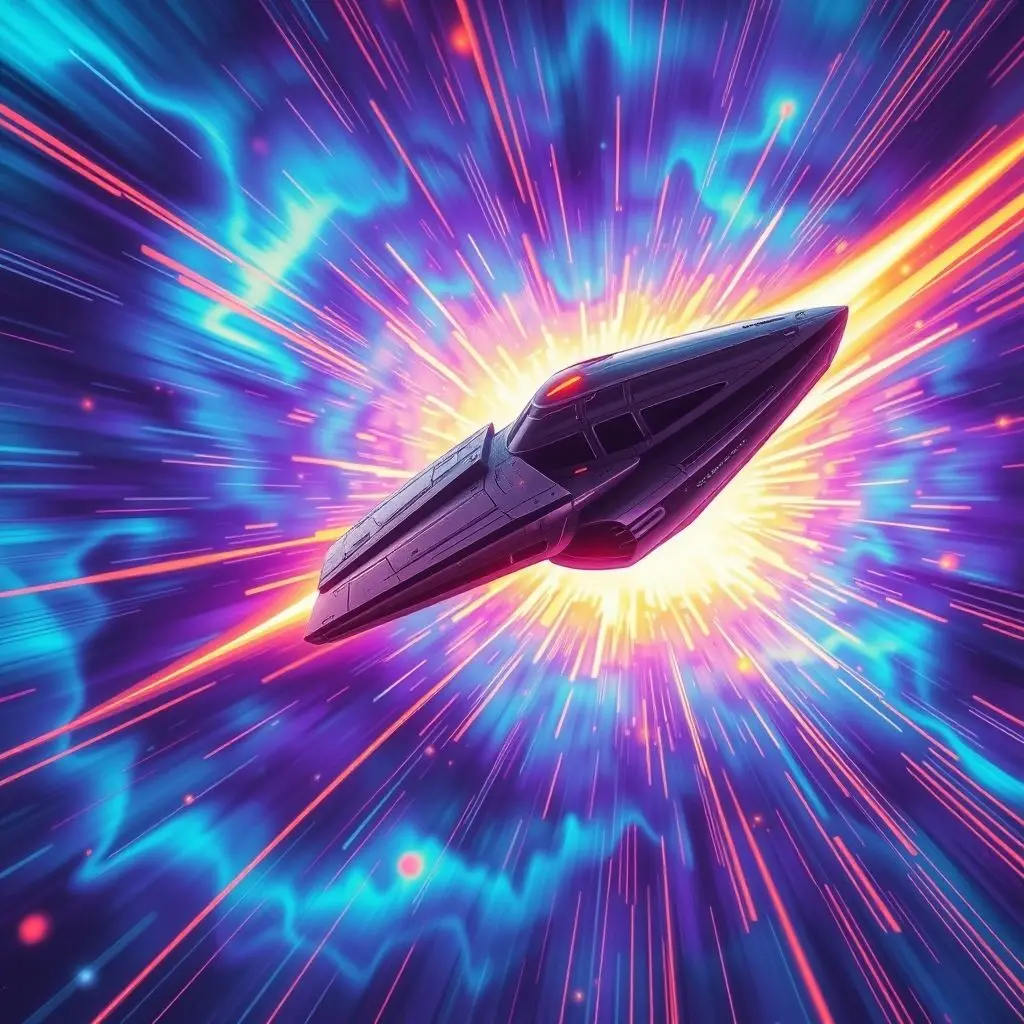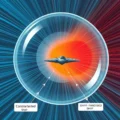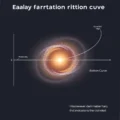The cosmos is vast beyond comprehension. Light, our fastest cosmic messenger, takes years to cross interstellar distances. Proxima Centauri, our nearest star system beyond the Sun, is over four light-years away. A conventional spacecraft would take tens of thousands of years to get there. The dream of reaching the stars within a human lifetime seems impossible, shackled by the universe’s ultimate speed limit: the speed of light.
Physicists, guided by Albert Einstein’s monumental work on relativity, have long told us that nothing with mass can accelerate to the speed of light, let alone surpass it. As an object approaches ‘c’, its mass increases, demanding infinite energy to go faster. It seems like an insurmountable barrier, an end to the interstellar travel story before it even truly begins.
But what if there was a loophole? What if you didn’t have to move faster than light in the conventional sense? What if, instead, you could somehow manipulate the fabric of spacetime itself?
That mind-bending question is the core idea behind theoretical concepts like the Alcubierre warp drive. It’s not just stuff of science fiction epics like Star Trek; the theoretical math explores whether Einstein’s own equations might contain a hidden cosmic shortcut.
For a quick, visually engaging look at the core idea, check out this short explainer:
Table of Contents
The Cosmic Speed Limit: Einstein’s Unbreakable Rule?
Einstein’s theory of Special Relativity, published in 1905, revolutionized our understanding of space and time. One of its most famous consequences is that the speed of light in a vacuum (‘c’) is the same for all observers, regardless of their motion. This seemingly simple fact has profound implications, including the famous equation E=mc² and the prediction that as an object with mass moves faster, its mass increases and time slows down relative to a stationary observer. Reaching the speed of light would require infinite energy, and exceeding it appears to be forbidden by the known laws of physics as we understand them in flat, unchanging spacetime.
However, Einstein also developed General Relativity (1915), which describes gravity not as a force, but as a curvature of spacetime caused by mass and energy. This is where the “bending space” idea comes in. General Relativity allows for spacetime itself to expand and contract. This is precisely what happened on a cosmic scale during the Big Bang’s inflation period, where space expanded much faster than light, but no objects moved faster than light *within* that space.

Riding the Spacetime Wave: The Alcubierre Warp Drive
In 1994, Mexican theoretical physicist Miguel Alcubierre proposed a model that mathematically fits within the framework of General Relativity. His idea wasn’t to move an object *through* space faster than light, but to move space itself around the object.
Imagine standing still on a moving walkway or escalator. You aren’t walking fast, but the walkway is carrying you along rapidly. The warp drive concept is similar, but instead of a walkway, it uses spacetime itself.
The Alcubierre drive theoretical model creates a “warp bubble” around a spacecraft. Space *in front* of the bubble is compressed, while space *behind* the bubble is expanded. The spacecraft rests in flat space within the bubble, essentially standing still locally, while the bubble (and the distorted spacetime it contains) moves, carrying the ship along with it. Since it’s space itself expanding and contracting, rather than matter moving through space, the concept doesn’t technically violate the speed of light limit *within* the local region of the bubble, even though the bubble’s effect could allow transit from point A to point B faster than light could travel through normal space.

The Catch(es): Exotic Energy and Insane Costs
While the math for the Alcubierre drive works on paper within General Relativity, it comes with monumental requirements and theoretical headaches.
The most significant hurdle is energy. Creating and maintaining the warp bubble requires a specific type of energy distribution known as “negative energy density.” This isn’t just a little bit of weird energy; early calculations suggested it would require an amount of negative energy equivalent to the mass-energy of entire planets, maybe even galaxies! More recent theoretical refinements have reduced the *required* amount significantly, potentially down to the mass of a small star or even a large asteroid, but it’s still an almost unimaginable amount, and the energy must be *negative*, not just a huge amount of positive energy like that released by a star.
What is “negative energy” or “exotic matter”? It’s a theoretical concept where the energy density of a region of space is less than zero. While certain quantum effects, like the Casimir effect, can produce localized regions of negative energy, generating the vast quantities needed for a macroscopic warp bubble and keeping it stable appears far beyond any current or foreseeable technological capability. It might even be fundamentally impossible to create or contain in the way the Alcubierre model requires.

Besides the energy crisis, other theoretical challenges exist:
- The Wall: Objects or particles caught in front of the compressing space might be accumulated and released in a burst of high-energy particles upon arrival, potentially obliterating anything at the destination.
- Causality Violations?: Some models raise concerns about the possibility of creating closed timelike curves, which could lead to paradoxes.
- Control: How would one start, steer, or stop a warp bubble? Generating the precise spacetime distortion needed seems incredibly complex.
- The Horizon Problem: Once inside the bubble, the ship might not be able to influence anything outside or even communicate with the outside universe because of the way spacetime is warped.
Beyond the Light Barrier: The Dream Persists
Despite the immense theoretical and practical obstacles, the idea of warp drive remains a fascinating subject for physicists and science fiction enthusiasts alike. It pushes the boundaries of our understanding of gravity and spacetime and encourages exploration of potential loopholes in our cosmic speed limit. Research in this area, while highly theoretical, contributes to our deeper understanding of General Relativity and exotic forms of matter and energy.
Currently, warp drive exists purely as a mathematical curiosity within theoretical physics. There is no experimental evidence or plausible technological pathway to create one. The energy requirements are staggering, and the need for hypothetical negative energy might be a showstopper. Yet, the allure of traversing the vast distances between stars fuels the imagination and the continued, albeit slow and abstract, investigation into such concepts.
Perhaps one day, a breakthrough in physics will reveal a new way to manipulate spacetime or access exotic energy sources currently unknown to us. Until then, the warp drive remains firmly in the realm of speculative science, a tantalizing possibility that reminds us how much we still have to learn about the universe.

Frequently Asked Questions About Warp Drive
Q: Is the Alcubierre warp drive real?
A: No, not in a physical, buildable sense. It is a theoretical solution within Einstein’s equations (General Relativity) that describes how spacetime could be manipulated to allow faster-than-light travel *without* objects moving faster than light locally. However, it requires exotic conditions and materials (like negative energy) that we don’t know how to create or control, and the energy requirements are currently considered prohibitive.
Q: What is “negative energy” or “exotic matter”?
A: In the context of warp drive, it refers to theoretical matter or fields that have negative mass-energy density. This would cause gravity to be repulsive rather than attractive. While quantum mechanics predicts tiny, fleeting amounts of negative energy in certain situations (like the Casimir effect), generating the vast quantities needed for a warp bubble is purely hypothetical at this time.
Q: How is a warp drive different from hyperspace or wormholes?
A: These are different theoretical or science fiction concepts. Hyperspace usually involves entering another dimension where distances are shorter. Wormholes are theoretical tunnels through spacetime connecting two distant points. The Alcubierre warp drive works by directly manipulating the spacetime around the ship, compressing space in front and expanding it behind, rather than using another dimension or a pre-existing tunnel.
Q: Could a warp drive be built in the future?
A: It’s impossible to say for certain. The challenges, particularly the need for large amounts of stable negative energy, are so immense that many physicists are skeptical. However, our understanding of the universe is incomplete, and future discoveries might reveal new physics that make such concepts more feasible. For now, it remains firmly in the realm of theoretical speculation.
Q: Does warp drive violate Einstein’s theory of relativity?
A: The Alcubierre model is derived from Einstein’s General Relativity equations. It doesn’t violate the rule that objects cannot move faster than light *through* spacetime locally. Instead, it proposes moving spacetime itself, which is not bound by the same local speed limit. So, technically, it works *within* General Relativity, but requires exotic conditions not yet observed or created.





